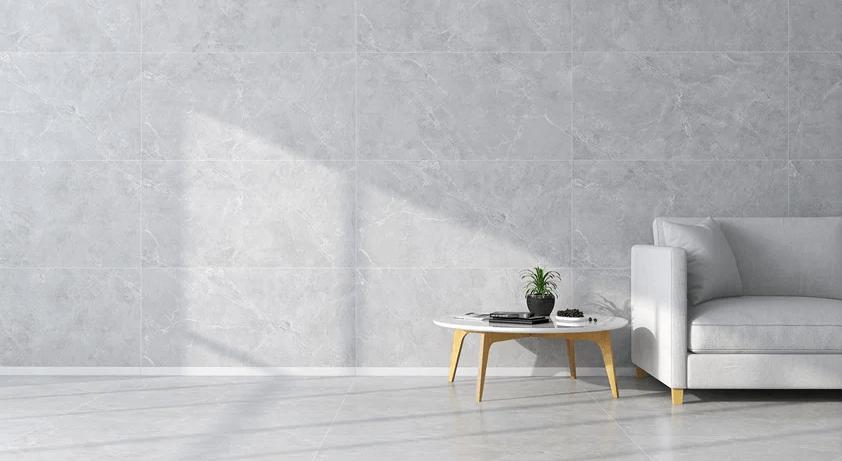
Selecting the right type of tile for your home can be a daunting task. Among the myriad of choices available, porcelain and ceramic tiles are two of the most popular options for flooring. Both offer durability, versatility, and a wide range of styles, but they also have distinct differences that can influence your decision. In this article, we'll explore the characteristics, advantages, and drawbacks of porcelain and ceramic tiles to help you make an informed choice for your home renovation project.
In this section, the author will present you with the superiorities of using porcelain tiles.
Porcelain tiles are made from a type of clay called kaolin, which is fired at extremely high temperatures. This process results in a dense and durable tile that is less porous than ceramic tiles. The lower porosity makes porcelain tiles more water-resistant and suitable for both indoor and outdoor applications.
Porcelain tiles are renowned for their exceptional durability. They can withstand heavy foot traffic, making them an ideal choice for high-traffic areas like hallways, kitchens, and bathrooms.
Their durability also extends to resistance against stains, scratches, and chips, which ensures a longer lifespan for your flooring.
Porcelain tiles come in a wide array of styles, colors, and patterns, mimicking the appearance of natural materials like stone, wood, and even fabric. This versatility allows you to achieve various aesthetics, from rustic to modern, while benefiting from the durability of porcelain.
Maintaining porcelain tiles is relatively easy. They are easy to clean and require minimal effort to keep looking pristine. Regular sweeping and mopping are usually sufficient to maintain their appearance.
Porcelain tiles tend to be more expensive than ceramic tiles due to their manufacturing process and enhanced durability. However, their long-term value often justifies the initial investment.

As for the ceramic tile, it is an affordable option. In this section, the author will list the features of the ceramic tiles.
Ceramic tiles are crafted from a mixture of clay, minerals, and water. This blend is fired at lower temperatures compared to porcelain, resulting in a porous and less dense tile. Ceramic tiles are typically glazed to add color and provide an extra layer of protection.
One of the primary advantages of ceramic tiles is their affordability. They are generally less expensive than porcelain tiles, making them an attractive option for budget-conscious homeowners. This cost-effectiveness allows you to achieve a stylish look without breaking the bank.
Ceramic tiles offer a diverse range of designs, colors, and sizes. From classic to contemporary, you'll find a ceramic tile that suits your interior design preferences. The glazing process also allows for intricate patterns and textures.
While ceramic tiles are less dense than porcelain, they are still a durable option for flooring. However, they may not be as suitable for high-traffic areas or outdoor use as porcelain tiles due to their higher porosity.
Maintaining ceramic tiles is straightforward. Regular cleaning and sealing of grout lines are essential to prevent staining and water penetration. The glazed surface helps protect against stains and spills.

Then, it is time to compare the porcelain and ceramic tiles. In this section, the author will compare them in several aspects such as durability, water resistance, cost, installation, and aesthetics.
In terms of durability, porcelain tiles have the upper hand. Their dense composition and low porosity make them highly resistant to wear and tear. Ceramic tiles are also durable but may show signs of wear more quickly in high-traffic areas.
Porcelain tiles excel in areas where moisture is a concern, such as bathrooms and kitchens. Their low porosity means they are less likely to absorb water, reducing the risk of mold and mildew growth. Ceramic tiles are suitable for these areas too but may require more maintenance to prevent moisture-related issues.
Porcelain tiles are generally more expensive than ceramic tiles upfront. However, their longevity and resistance to damage may make them a cost-effective choice in the long run. Ceramic tiles are budget-friendly and a great choice for those seeking a stylish yet economical flooring solution.
Both porcelain and ceramic tiles require professional installation to ensure proper alignment and durability. However, due to their denser composition, porcelain tiles may be slightly more challenging to cut and install, which could increase installation costs.
The aesthetic choice between porcelain and ceramic tiles depends on your personal preferences and design goals. Porcelain offers a wider range of design possibilities and can closely mimic the look of natural materials, while ceramic tiles offer plenty of design options at a more affordable price point.
When choosing between porcelain and ceramic tiles, it's essential to consider your specific needs, budget, and design preferences.
Porcelain tiles are the go-to option for those prioritizing durability and water resistance, making them suitable for high-traffic areas and moisture-prone spaces.
On the other hand, ceramic tiles provide an affordable and versatile choice for those who want an array of design options without breaking the bank. Ultimately, the "better" option depends on your individual circumstances and priorities.
Whichever you choose, both porcelain and ceramic tiles can enhance the beauty and functionality of your home's flooring, adding value and style for years to come.